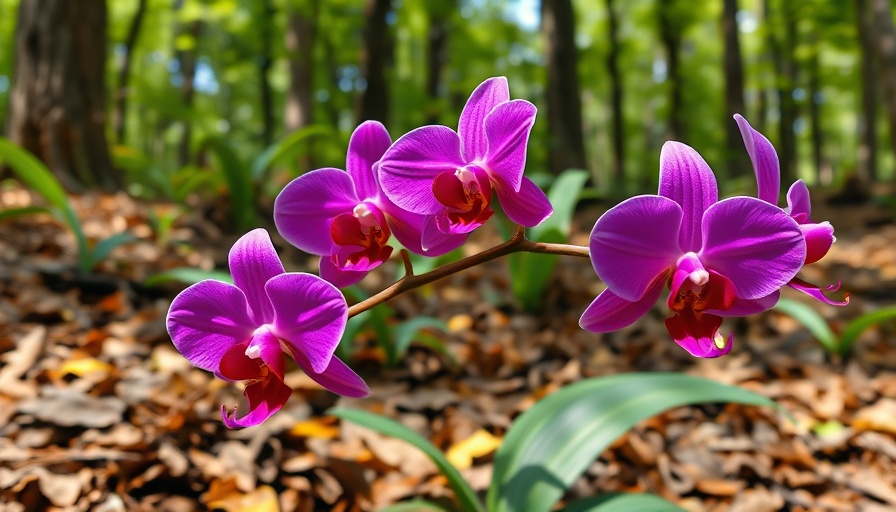
Understanding the Importance of Orchid Conservation
Orchids are more than just a beautiful plant gracing our landscapes; they are vital indicators of ecosystem health. The new initiative from the North American Orchid Conservation Center (NAOCC), called Native Orchid Propagation for Sustainability (NOPS), focuses on developing sustainable propagation practices for North American native orchids, crucial for maintaining biodiversity and environmental stability.
The Collaborative Effort Behind NOPS
This ambitious project brings together esteemed institutions like Longwood Gardens, Smithsonian Gardens, and the University of Minnesota Landscape Arboretum among others, aiming to cultivate the knowledge necessary for the preservation of these delicate species. Native orchids require unique environmental conditions for their growth, making their propagation a complex challenge that has yet to be fully resolved in the U.S. and Canada.
The Ecological Role of Orchids: A Canary in the Coal Mine
The significance of orchids extends beyond aesthetics. As indicated by their complex relationships with pollinators, trees, and soil ecosystems, orchids serve as ecological barometers. When these plants vanish from their habitats, it signals underlying environmental issues, such as climate change or habitat destruction, that need urgent attention. Understanding their interdependencies is key to successful conservation efforts.
NOPS: A Blueprint for Sustainable Orchids
The project will initially target 25 diverse orchid species from various U.S. ecoregions, developing standardized propagation protocols to facilitate a wider restoration. Following this, the initiative aims to encompass more orchid species, enhancing our botanical gardens' native collections while contributing to the global effort of restoring this delicate flora. This endeavor is critical not just for orchids but also for the health of our ecosystems.
Why Eco-Conscious Lodge Owners Should Care
For boutique hospitality professionals, engaging in sustainable landscaping practices, including the promotion of native flora like orchids, can significantly enhance the ecological footprint of their businesses. Incorporating these native plants not only reduces water usage through drought-resistant plants but also enriches the guest experience by fostering a connection with nature. These eco-friendly landscapes resonate with environmentally conscious travelers, setting a precedent for sustainable tourism.
Actionable Steps for Sustainable Hospitality
As a lodge owner, consider integrating a variety of native plants in your landscaping. Using organic fertilizers alongside eco-friendly irrigation systems can foster growth while minimizing environmental impact. Additionally, education about the orchids’ role in the ecosystem can be a unique selling point for your establishment, promoting sustainable practices in your region.
Join the Movement for a Greener Future
The NOPS project is a crucial step forward in the conservation of North American orchids and, by extension, the ecosystems they support. By participating in sustainable practices, boutique hospitality professionals can contribute to a greater cause and attract more eco-conscious clientele.
Consider integrating native orchid cultivation into your hospitality practices not only to beautify your space but also to pave the way for a sustainable and responsible approach to tourism.
 Add Row
Add Row  Add
Add 




Write A Comment